Push ads steadfastly maintain their status as a potent and direct channel for audience engagement. Their distinct capability to deliver timely, attention-grabbing messages straight to users’ devices cements them as an essential tool for astute marketers in 2025. Whether you’re aiming to amplify your existing strategies or are just beginning to explore this format, grasping the intricacies of push advertising is crucial for leveraging its full power. This guide will navigate you through everything you need to know to make push ads a successful component of your campaigns.
What Is Push Notification Advertising?
Let’s start from the very beginning, just to be sure we are on the same page. Unless you’ve spent the past decade somewhere under a rock, you must be familiar with this little thing:
Those short messages that appear at least a couple of times a day on your smartphone screen are called push notifications. They’re sent by apps or websites and typically concern news, traffic updates, weather forecasts or alerts, flight changes, social media updates, or whatever other types of info you are interested in.
Push notification advertising delivers ads instead of information.
How Push Ads Work – The Subscription-Based Model
It’s all really simple. First, users must agree to receive push notifications from a website. Ads are then delivered to the user’s mobile or desktop devices in the form of notification.
You can probably already see where push gets its lead over other ad types. These ads use a subscription-based model, which means that a user has to agree to receive push notification first. This prequalifies the audience and leaves out only those who are probably more interested in digital offers.
The other beauty of it is that the process is ongoing even when people aren’t browsing. When they click the notification, users go to the promoted landing page or directly to the offer. This part is entirely up to you.
No banner with provided ID foundPush vs In-page push (web push)
The novelty on the market are so-called “in-page” push, sometimes referred to as “web push”. They are the answer to growing restrictions toward traditional push.
For example, Google Chrome since it has been updated to the 80 version learns how a user reacts to push notifications and, if a user commonly disables them, it will disable all further questions.
To combat this and other problems, web developers have introduced a type of display ad that looks almost exactly like a push notification. Because it is generated by a web page itself and not by a web browser, it is immune to any web browser policies.
More on in-page push ads can be found in this article.
Mobile push notifications vs. desktop push notifications
Now let’s talk about another two types of push notifications… after all, this type of ad is not limited to mobile. They are powered by web-based SDK targeting browser traffic. So on both platforms you can send push ads, however on mobile you have a lot more options for personalization and interaction with a given user.
It won’t come as a shock when I say that mobile is growing growing. And an advertising method that allows you to interact so personally with users. Another consideration is exposure – mobile push can cover up to 80% of a user’s screen. Of course, you don’t want to be too irritating, but that is the kind of exposure a desktop push simply cannot attain.
Mobile push also has GPS data incorporated allowing you to target based on location as well and generally just get a more specific audience. Overall, both formats deliver a decent quality of traffic.
Push Ads Advantages
Push notifications aren’t just another ad format; they offer distinct benefits that can significantly enhance your marketing efforts. Understanding these advantages is key to leveraging push ads effectively within your campaigns, allowing you to reach your audience in a direct, engaging, and efficient manner. Let’s delve into what makes push advertising a compelling choice for marketers aiming for tangible results.
High-Quality Traffic from a Real, Consenting Audience
The cornerstone of push advertising’s effectiveness lies in its permission-based nature. Users actively opt-in to receive these notifications, meaning they’ve already expressed a degree of interest or willingness to engage with content from the publisher. This pre-qualification step filters out uninterested individuals, leading to an audience that is genuinely receptive to relevant offers. Consequently, the traffic generated tends to be of higher quality, exhibiting better engagement metrics and a greater likelihood of conversion. This consent-driven model also fosters a more positive user experience, as individuals feel in control of the communications they receive, making them more amenable to the advertised messages.
Unparalleled Ad Visibility
In a crowded digital space where ads compete fiercely for attention, push notifications cut through the noise with exceptional visibility. Unlike banner ads that can be easily overlooked or emails that might sit unopened, push ads appear directly on a user’s mobile or desktop screen, often overlaying other applications or a locked screen. This prominent placement ensures your message is seen almost immediately. For mobile devices, a push notification can command a significant portion of the screen, making it hard to ignore. This direct line of sight maximizes the chances of your ad being noticed, a critical first step in any successful advertising campaign.
Immunity to Adblockers and Banner Blindness
Two major challenges in modern digital advertising are adblocker software and the phenomenon of banner blindness. Push notifications effectively sidestep both. Since they operate through browser or app-level permissions rather than being standard display ads on a webpage, they are generally not affected by adblocking extensions. Furthermore, banner blindness, where users subconsciously ignore traditional ad placements, is less of an issue. Push notifications are perceived more as alerts or direct messages rather than typical advertisements, prompting users to pay more attention. This allows marketers to reach audiences that might otherwise be inaccessible through conventional display advertising channels.
Higher Engagement and Click-Through Rates (CTR)
Due to their direct delivery, high visibility, and opt-in nature, push ads consistently demonstrate higher engagement and click-through rates compared to many other ad formats. The timely and often personalized content of push notifications encourages immediate interaction. Users who have consented to receive these alerts are more likely to find the content relevant, leading them to click through to a landing page or offer. The sense of urgency that can be conveyed in a short push message also plays a role in prompting quick action. This enhanced engagement directly translates to better campaign performance and a more efficient use of advertising spend.
Advanced Customization and Personalization
Push notifications offer robust options for customization and personalization, allowing marketers to tailor messages for maximum impact. From crafting compelling ad copy with catchy titles and descriptive text to selecting eye-catching icons and images, every element can be optimized. Beyond the creative aspects, targeting capabilities enable segmentation based on various factors such as user behavior, demographics, device type, and even geographical location (especially for mobile push). This level of personalization ensures that users receive ads that are highly relevant to their interests and needs, significantly increasing the likelihood of a positive response and conversion, ultimately fostering a stronger connection with the audience.
Cost-Effective with Strong ROI Potential
Push advertising often presents a more cost-effective solution with a high potential for return on investment (ROI) compared to other channels. The pricing models, typically cost-per-click (CPC) or cost-per-mille (CPM), can be very competitive. Combined with the high-quality traffic derived from consenting users and the higher CTRs, advertisers can achieve their campaign goals with a more efficient ad spend. The ability to precisely target and A/B test different ad creatives allows for continuous optimization, further improving ROI over time. For businesses looking to maximize their advertising budget while reaching an engaged audience, push notifications offer a compelling and financially viable option.
Find Profitable Verticals for Push Traffic
If you put in a decent amount of work and correctly set up your push-ads campaign you can later match it with a wide selection of verticals. We’re talking e-commerce, travel, news & entertainment, finance, health & beauty, mobile apps, games, job search, insurance, video streaming, and many more.
However, the alerting nature of this ad format works best with the following ones:
- Finance
- Dating
- Sweepstakes
- Gamblings
- News
All of these verticals have offers that can be advertised well by creating a sense of urgency:
“Get this financial opportunity now!“
“Love is just around the corner“
“Wanna have a chance of winning a brand new PS5?“
You usually don’t use this kind of language when selling fishing equipment.
Make sure to check out this article if you need help selecting the right vertical for your offer!
Push Ads Examples
To truly grasp the potential of push ads, let’s look at a few common scenarios where they excel. These examples illustrate how different industries can leverage the unique characteristics of push notifications to achieve specific marketing objectives, from driving immediate sales to re-engaging users.
E-commerce Flash Sale Alert
E-commerce businesses frequently use push ads to announce time-sensitive promotions like flash sales or limited stock offers. The ad typically features an attractive product image, a compelling discount, and a clear call-to-action that creates urgency. For example: “🔥 Flash Sale! 50% OFF All Headphones. Ends Midnight! Shop Now ➡️”. This direct approach leverages the immediacy of push notifications to drive quick conversions and boost sales figures during promotional periods.
Finance & Investment Opportunity
In the finance vertical, push ads can deliver timely alerts about market movements, new investment opportunities, or updates on financial products. These notifications aim to provide valuable information quickly, encouraging users to act on potentially lucrative offers. An example could be: “📈 New Crypto Report! Discover the next potential breakout coin. Access your free report now.” The key is to convey authority and urgency, prompting users to learn more about a financial service or insight.
Gaming App Update/Offer
For mobile gaming apps, push notifications are invaluable for user re-engagement and promoting in-app purchases. Developers can announce new levels, special events, or limited-time offers on in-game currency or items. For instance: “⚔️ Your Kingdom Needs You! Log in now for a FREE Hero Chest. Don’t miss out!” These ads often use emojis and exciting language to capture the gamer’s attention and entice them back into the app, increasing daily active users and monetization opportunities.
Travel Deal Notification
Travel companies use push ads to highlight last-minute deals, special offers on flights or hotels, or destination-specific promotions. These notifications tap into users’ wanderlust by presenting attractive travel opportunities directly on their devices. An example: “🌴 Exclusive Offer! All-inclusive Bali resort 40% OFF this week only. Explore now!” By creating a sense of exclusivity and urgency, travel push ads can effectively stimulate bookings and fill inventory.
How to Set Up a Converting Push Campaign
Being a successful affiliate marketer requires attention to detail. This is particularly important when setting up a push-ads campaign. In order for it to convert, you need to carefully optimize each of its core elements: an image, a title, and a description (main message).
Each of these elements is customizable, which means that the only limit is your imagination.
The example below is from an ad setup at Mobidea for an antivirus software:
And below is an example of what a working push ad could look like on your phone:
However, there are some rules that need to be followed each time you craft a new push-ads campaign.
Your image must be simple, but catchy
We’re visual creatures, which is why most likely, the graphics will be the first thing that catches the eye. If you go with a boring safe choice, you’re risking people swiping your push ad right off their screens without bothering to read your carefully crafted copy.
On the other hand, an overly complicated design fitted in a tiny icon reserved for a push notification will only cause confusion and frustration.
Hence, it’s all about finding the right balance. It may sound tedious, but don’t worry! More often than not your gut will help you out. You are accustomed to those notifications just as much as the other guy will be, after all.
Keep the title short and concise
Hate to break it to you, but you’re not writing the next great American novel. You’re selling stuff via a phone screen. So, no matter how proud you are of the brand-new metaphor or a semi-offensive joke you’ve come up with the other day – keep it to the point.
Make the description creative and effective
This is your time to shine. Just keep in mind there’s still not that much space and you want people to click rather than to read your ad. In a way, your ad description is your final chance to convert them.
Think of it this way: those who’d be intrigued by the image would click right away. The catchy title would grab another percentage of your potential audience. And only those who remained unimpressed with your previous effort will stick around to read the description.
Make it worth their while or you’re losing money right there and then.
We are done with the theory, for now, so let’s check out what it means in practice.
Get traffic from a push-oriented traffic source
There are many traffic source platforms that offer push traffic among others. Chief among them is Zeropark, Voluum’s close partner. But if you want more options, you can take a look at our review of the best push traffic sources.
An Example of a Well-Crafted Push Ad
Here’s an example of a well-crafted summertime-themed push notification advertisement.
All three fundamental elements of push notification ads here are optimized. We have an enticing image (but still a legal one – keep in mind that push is only non-adult-traffic ad format). In the description, you can observe a sense of urgency with a couple of “power words” like a “bargain”, “deal”, “sale” or “discounts”. What is more, there are some emojis, proven to be really eye-catching and hence – profitable.
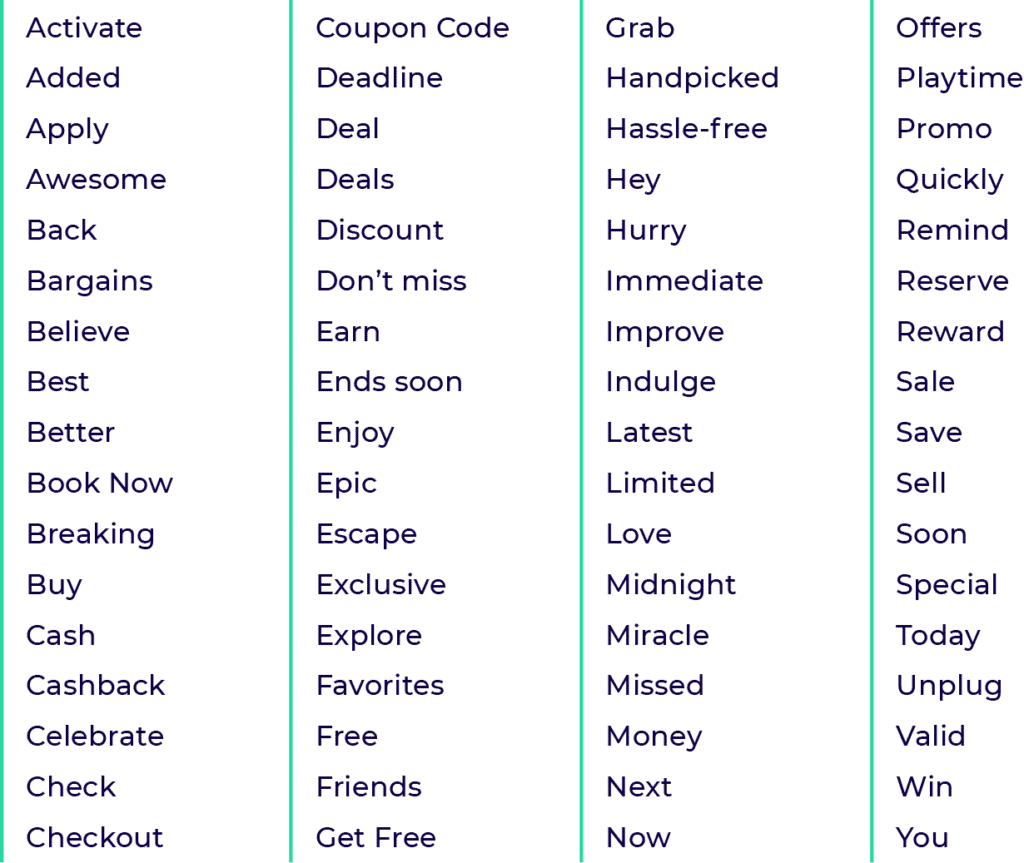
A Few Tips Before You Start Running Push Campaigns
You may have heard once or twice that affiliate marketing is quite an easy way to become a billionaire. Well, hold your horses, cowboy. Sure it may be a profitable business but it takes a lot of learning, hard work, and optimization skills.
Crafting a well-performing push campaign requires time, good ideas, and patience. Setting-up a brilliant campaign that will bring you profits from scratch is quite a challenge. You’d probably need to run lots of A/B testing to learn which combination of copy and design converts best before you’ll start earning the big bucks.
Track Your Performance & Automate Your Work With Voluum Ad Tracker
In affiliate marketing, it’s wise to craft a strategy based on hard data rather than hope for the best while struggling with a chaotic optimization. The best way to get that data, measure its effectiveness, and manage your campaigns is to get an ad tracker.
How Do Ad Trackers Work?
Ad trackers collect user data online for you to use in your future campaigns. Thanks to ad trackers you can know exactly what type of audience you’re dealing with, where they are coming from, what mobile device to use, and more.
More importantly, ad tracker facilitates campaign management for affiliates, as the most advanced trackers, like Voluum, will let you run all your campaigns from one platform, regardless of the ad format and traffic source.
Why Voluum?
Unlike some other trackers on the market, Voluum has been designed by affiliates for affiliates. It is a powerful tech solution focused on campaign optimization and automation. Thanks to Voluum Automizer you can integrate your account with the most popular affiliate traffic sources to set up rules and alerts, create whitelists and blacklists, access granular targeting reports, and more.
Let Voluum take care of your affiliate marketing campaigns while you reap the benefits.
Integrate Your Voluum and Zeropark Accounts for an Even Better Experience!
Voluum and Zeropark work best in tandem. Using the same, robust infrastructure, redirections between them are lightning-fast, tracking becomes as easy as it gets, and the synergy effect of integrating both solutions allow you to maximize your profit.
We’d additionally advise you to use Voluum for tracking your campaigns, as it will increase your redirect speeds to a level no other traffic source+tracker combination can match. This is because we pass all the data on the backend. Learn more about the benefits of integrating Voluum with Zeropark!
Push in 2025
As we navigate the digital advertising sphere in 2025, push notifications continue to adapt and prove their resilience. Several key trends and considerations are shaping their effective use:
- The Evolving Role of AI and Personalization: In 2025, AI-driven personalization is no longer a novelty but a necessity. Push ad strategies are increasingly leveraging machine learning to deliver hyper-relevant content at optimal times, significantly boosting engagement and conversion rates by understanding user intent and behavior patterns more deeply.
- Navigating the Cookieless Era and Prioritizing Privacy: The transition to a cookieless digital world is well underway. Successful push advertising in 2025 hinges on robust first-party data strategies and transparent user consent, ensuring compliance with evolving privacy regulations (like GDPR, CCPA, and newer frameworks) and building crucial user trust.
- Enhanced Interactivity and Rich Push Formats: Users now expect more interactive experiences. Rich push notifications, incorporating buttons, carousels, quick replies, and even simple forms directly within the notification, are becoming standard for driving immediate action and gathering valuable feedback without requiring a click-through.
- Integration within Omnichannel Strategies: Push notifications are increasingly viewed not in isolation but as a critical touchpoint within a larger omnichannel customer journey. They seamlessly work with email, in-app messages, SMS, and other channels to provide a cohesive and consistent user experience, reinforcing brand messaging across platforms.
- Focus on In-App and High-Intent Environments: With ongoing changes in browser policies regarding web push, leveraging in-app push notifications (for owned app audiences) and targeting users within high-intent environments (like specific publisher sites for in-page push) is crucial for sustained reach and delivering messages at moments of peak receptivity.
These elements underscore the dynamic nature of push advertising and highlight the importance of staying agile and data-informed.
Push Notification Ads – Key Takeaways
To sum up, this native ad format is still a very on trend , offering a non-intrusive, user-friendly, and highly-engaging way for advertisers to reconnect and expand their audiences. Here are some key takeaways worth remembering from this article:
- Push ads are still trending
- Ads are delivered on a user’s desktop or mobile device even when they’re not browsing
- Higher CTR and ROI are among the top of its proven benefits
- Users need to opt-in to receive them, which makes push notification ads less intrusive than other ad formats
- Crafting a well-performing push requires time, good ideas, and A/B testing
- To boost their performance marketers should always track and manage their efforts, getting an ad tracker is advisable here.


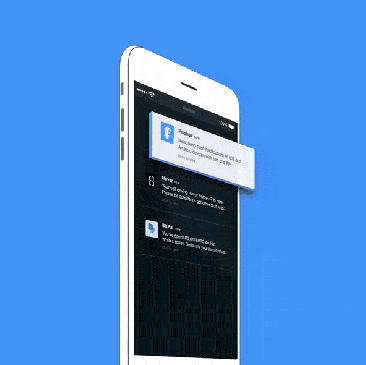
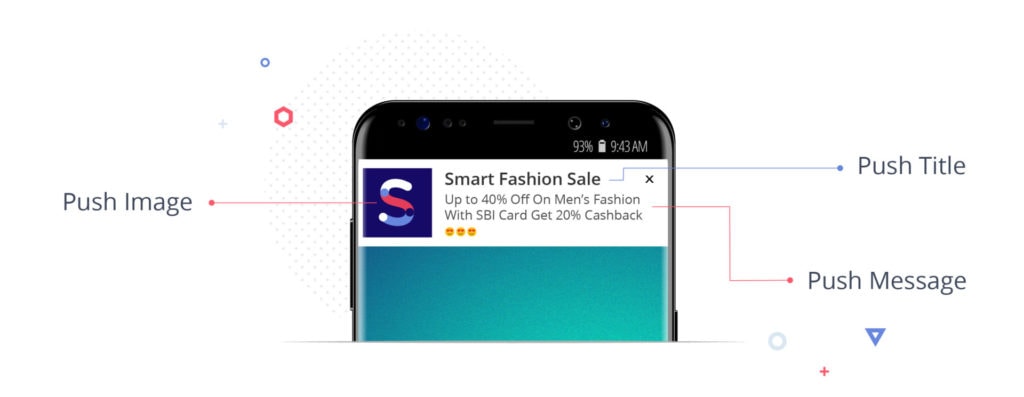

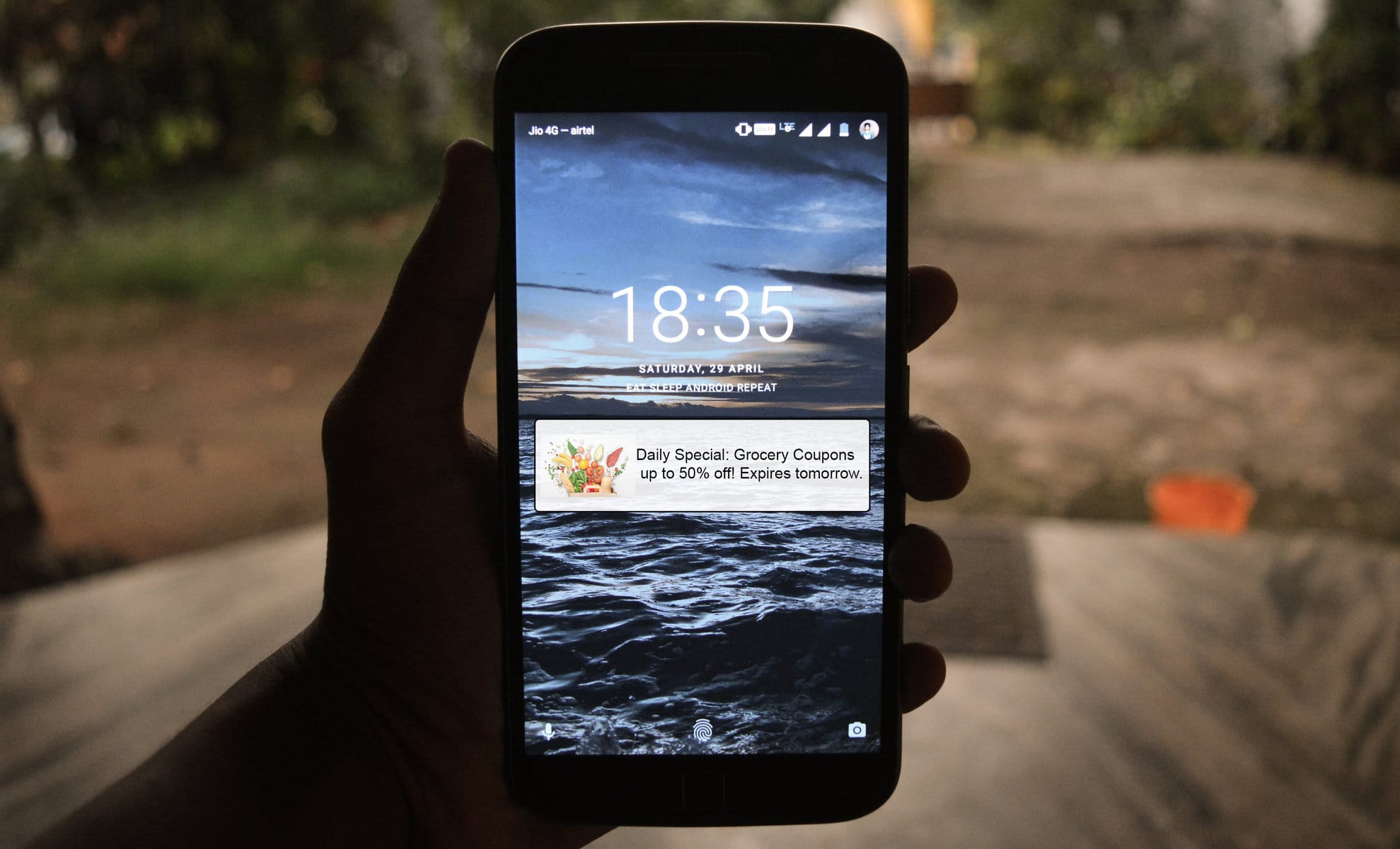

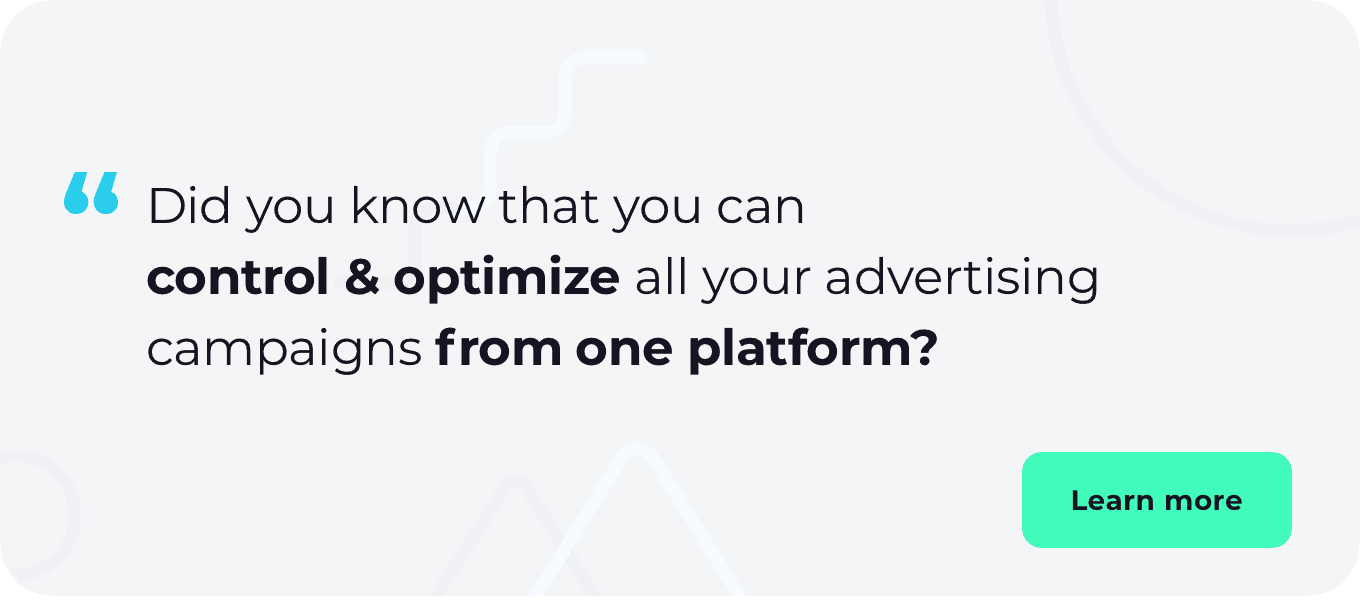

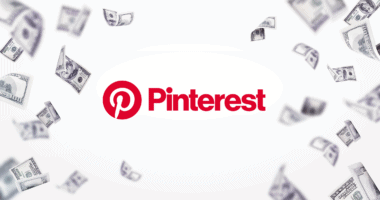


4 comments
Great article, thanks for sharing!
It’s really educational.
Good post, Thanks for sharing.
Most of the businesses nowadays are leveraging technology to make it easier for their customers to interact with them.